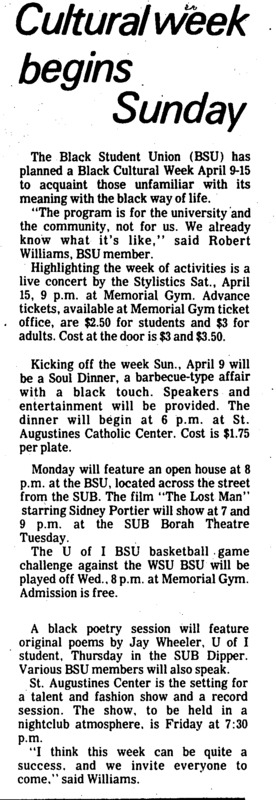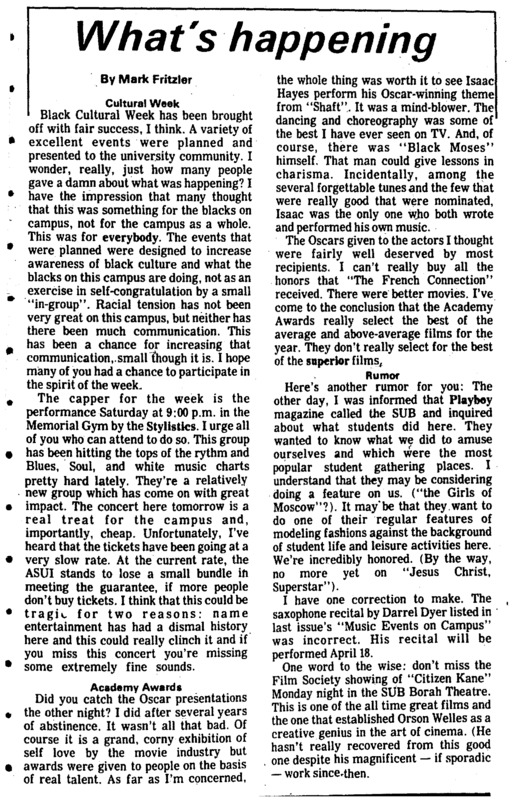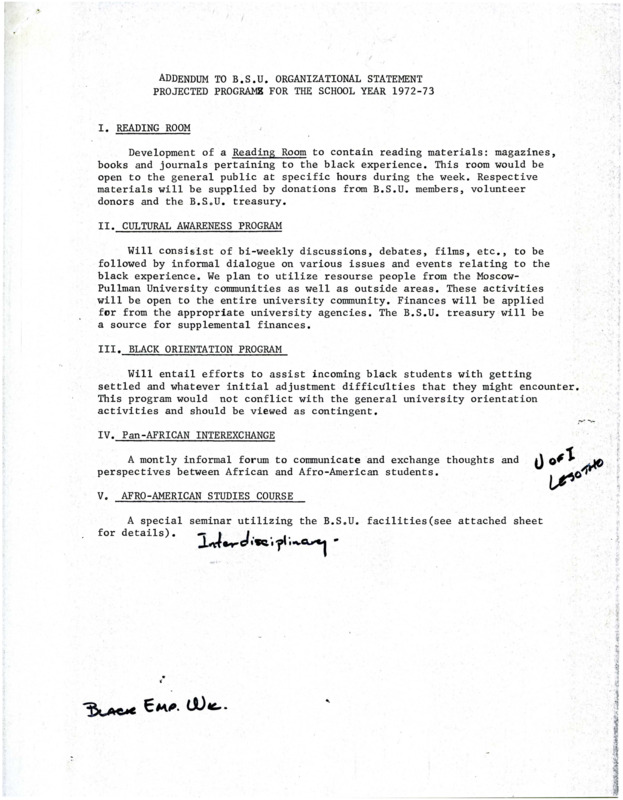Black Cultural Week
The BSU also hosted their “Black Cultural Week” wherein Black culture would be celebrated with the goal of greater student outreach and educating White students. The first Black Cultural Week was held on the week of April 9, 1972, with the Argonaut continuously reporting on its events.1 Though a success in terms of new ground broken, the Argonaut reported that it saw little traffic.2 This was more or less confirmed in the following year, in which the Black Cultural Week was not able to fulfill the financial requests from the Associated Students of the University of Idaho, or the ASUI (who had allowed them to borrow $650 for the event and only received $33 back), straining the relationship between the BSU and the ASUI.3
The BSU held another series of events in 1974, but with little public attention, this seems to have been the last year the BSU put it on. The BSU also produced an Organizational Statement for the 1972-1973 school year in which they announced they would open a reading room in the house, operate a cultural awareness program that would meet bi-weekly to discuss the Black experience on campus, manage a Black orientation program for new Black students, run a Pan-African interexchange for discussion between African and African-American students, and finally teach an Afro-American studies course.4 However, the cracks were beginning to show in the relationship between the BSU and the senior leadership of the University as the issue of money came up again.
Notes
- “Cultural Week Begins Sunday,” Argonaut, April 7, 1972, https://digital.lib.uidaho.edu/digital/collection/argonaut/id/3639/rec/16. ↩
- Mark Fritzler, “What’s Happening,” Argonaut, April 14, 1972, https://digital.lib.uidaho.edu/digital/collection/argonaut/id/3640/rec/1. ↩
- “BSU Spells Confusion in the ASUI,” Argonaut, May 8, 1973, https://digital.lib.uidaho.edu/digital/collection/argonaut/id/3695/rec/3. ↩
- “Addendum to B.S.U Organizational Statement Projected Program for the School Year 1972-1973,” Black History at the University of Idaho, https://www.lib.uidaho.edu/blackhistory/items/h13_112.html. ↩




